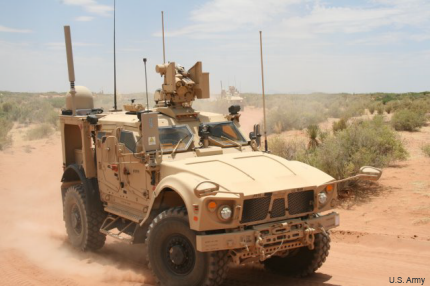Army blends intelligence into its battlefield network
The Army is upgrading WIN-T to include intelligence and C2 capabilities, with medical and logistics systems to come.

The Army’s Warfighter Information Network - Tactical (WIN-T) is an immensely important resource for operators in the field. Among its chief functions, WIN-T network provides critical Command, Control, Communications, Computers, Intelligence, Surveillance, and Reconnaissance (C4ISR) capabilities to soldiers on a mobile and secure network.
In an effort to further streamline the battlefield network, the Army, in collaboration with its Training and Doctrine Command (TRADOC) and Cyber Command, is merging command and control (C2), intelligence, logistics and medical systems within WIN-T.
The Army will save money, resources and vital satellite bandwidth by combining intelligence and C2 into one common platform, according to an Army release.
Current capabilities allow operators to communicate securely via voice, data, and video. The WIN-T network consists of several nodes that are necessary to support these functions.
In the first of three phases, the Army will replace its current 207 TROJAN Special Purpose Integrated Remote Intelligence Terminal Lightweight Intelligence Telecommunications Equipment, or TROJAN SPIRIT LITE, fielded within tactical formations. TROJAN SPIRIT is a satellite terminal capable of providing intelligence communications.
The new installments associated with the first phase were tested by the Research, Development and Engineering Command's Communications-Electronics Center, or CERDEC, which evaluated C4ISR readiness and technical performance.
Intelligence traffic was also tested by measuring it from a quality-of-service perspective – an overall assessment of the network as a whole. According to parties involved, quality-of-service analysis in relation to how intelligence traffic integrates and performs with the entire system allows developers to inform WIN-T of bandwidth allocation needed for certain tasks.
Developers also analyzed customer-specific bandwidth requirements to better gauge how the system would meet the needs of soldiers as compared to commercial systems meeting the bandwidth needs of customers. These systems were tested under the scope of a “PEO IEW&S Signals Intelligence system that supports intelligence-surveillance-reconnaissance missions in the areas of persistent area analysis, situational development and mission overwatch,” the Army said.
Bandwidth is limited, according to Lt. Col Thomas J. Addyman, chief for the Cyber Center of Excellence's Live Experimentation Branch, who said that these merged capabilities as part of the WIN-T network will “provide one less system that the soldier has to focus on in the field.”
Phases II and III will focus on medical and logistics convergence into the WIN-T network.




